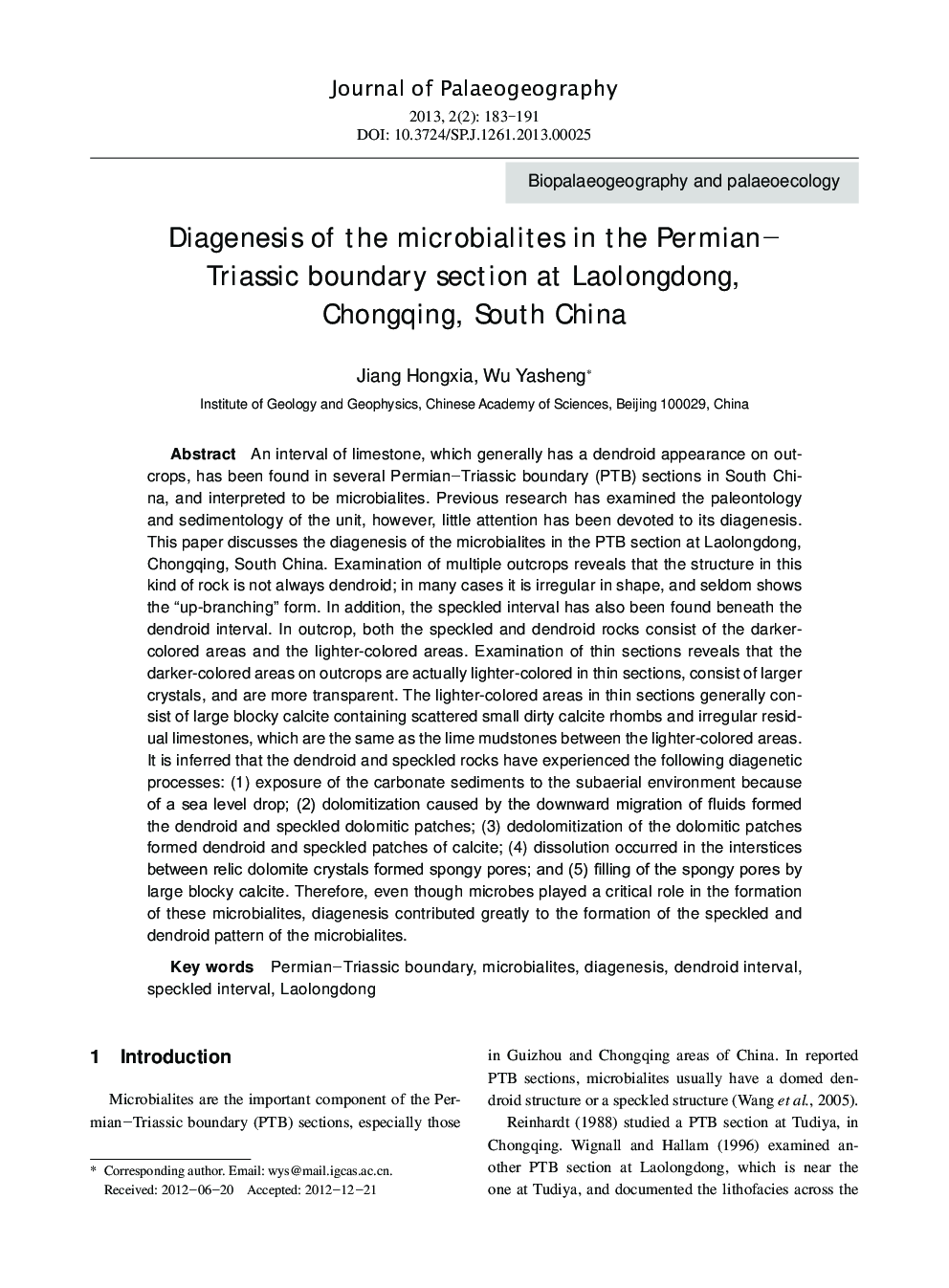| کد مقاله | کد نشریه | سال انتشار | مقاله انگلیسی | نسخه تمام متن |
|---|---|---|---|---|
| 4581034 | 1333675 | 2013 | 9 صفحه PDF | دانلود رایگان |

An interval of limestone, which generally has a dendroid appearance on outcrops, has been found in several Permian–Triassic boundary (PTB) sections in South China, and interpreted to be microbialites. Previous research has examined the paleontology and sedimentology of the unit, however, little attention has been devoted to its diagenesis. This paper discusses the diagenesis of the microbialites in the PTB section at Laolongdong, Chongqing, South China. Examination of multiple outcrops reveals that the structure in this kind of rock is not always dendroid; in many cases it is irregular in shape, and seldom shows the “up-branching” form. In addition, the speckled interval has also been found beneath the dendroid interval. In outcrop, both the speckled and dendroid rocks consist of the darkercolored areas and the lighter-colored areas. Examination of thin sections reveals that the darker-colored areas on outcrops are actually lighter-colored in thin sections, consist of larger crystals, and are more transparent. The lighter-colored areas in thin sections generally consist of large blocky calcite containing scattered small dirty calcite rhombs and irregular residual limestones, which are the same as the lime mudstones between the lighter-colored areas. It is inferred that the dendroid and speckled rocks have experienced the following diagenetic processes: (1) exposure of the carbonate sediments to the subaerial environment because of a sea level drop; (2) dolomitization caused by the downward migration of fluids formed the dendroid and speckled dolomitic patches; (3) dedolomitization of the dolomitic patches formed dendroid and speckled patches of calcite; (4) dissolution occurred in the interstices between relic dolomite crystals formed spongy pores; and (5) filling of the spongy pores by large blocky calcite. Therefore, even though microbes played a critical role in the formation of these microbialites, diagenesis contributed greatly to the formation of the speckled and dendroid pattern of the microbialites.
Journal: Journal of Palaeogeography - Volume 2, Issue 2, April 2013, Pages 183–191